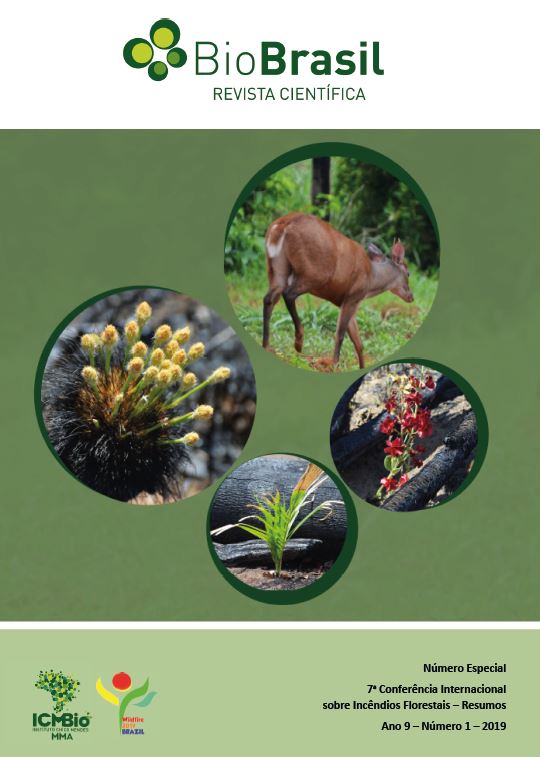How does Drought Impact Burned Area in Mediterranean Vegetation Communities?
DOI:
https://doi.org/10.37002/biodiversidadebrasileira.v9i1.939Keywords:
Water stress, SPEI (Standardized Precipitation Evaporation Index), Wildfire, Principal Component Analysis, GAMM (non-parametric mixed regression models)Abstract
Rigorous droughts cause defoliation and mortality incidents aggregating dead fuel load. In this study, we enlarge the temporal and spatial scale of investigation on how does drought influence burned area in Mediterranean vegetation communities (VCs). This work was conducted in Northeast Spain under pine stands, grasslands, woodlands, semi-deciduous scrub, and evergreen sclerophyllous-leaved shrublands. We considered wildfire perimeters burning over 10 ha (n= 592) in the period 1998-2015. 592 fires were analyzed that burned a total 173,720 ha. We addressed this research questions: (1) How does antecedent drought duration and intensity affect fire activity in these VCs? (2) How VCs interact with drought to influence burned area? (3) Are the relationships among drought, VCs and burned area stationary throughout the year? To this end, we analyzed drought versus burned area by means of multivariate factor analysis and non-parametric regression in specific plant communities through the weekly Standardized Precipitation Evapotranspiration Index. This investigation adds to better comprehend fire-drought relations mediated by VC, under a climate change. Our key outcomes were: (1) Although Pinus halepensis forests and shrublands covered 45% of the VCs area, the percentage of burned area in both VCs was 69.7% (higher than their sizes justified); (2) The highest occurrence of forest fires and the largest burned area happened under drought anomaly situations (stronger drought than the typical for those dates); (3) Drought anomalies effects were more significant in June and September than in July and August (the driest months). This is doubtless because in July and August fuels are fully available to burn.
Downloads
References
Subtema 4 - apresentação oral
Downloads
Published
Issue
Section
License
Copyright (c) 2021 Biodiversidade Brasileira - BioBrasil

This work is licensed under a Creative Commons Attribution-NonCommercial-NoDerivatives 4.0 International License.
Os artigos estão licenciados sob uma licença Creative Commons Atribuição-NãoComercial-SemDerivações 4.0 Internacional (CC BY-NC-ND 4.0). O acesso é livre e gratuito para download e leitura, ou seja, é permitido copiar e redistribuir o material em qualquer mídia ou formato.











